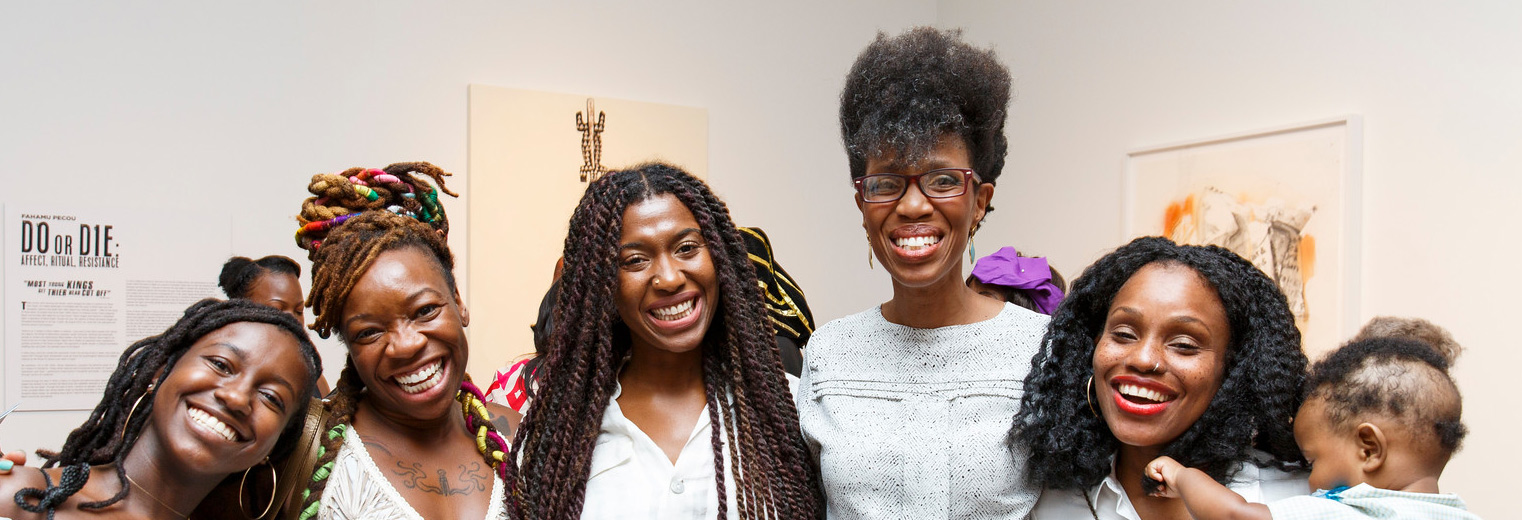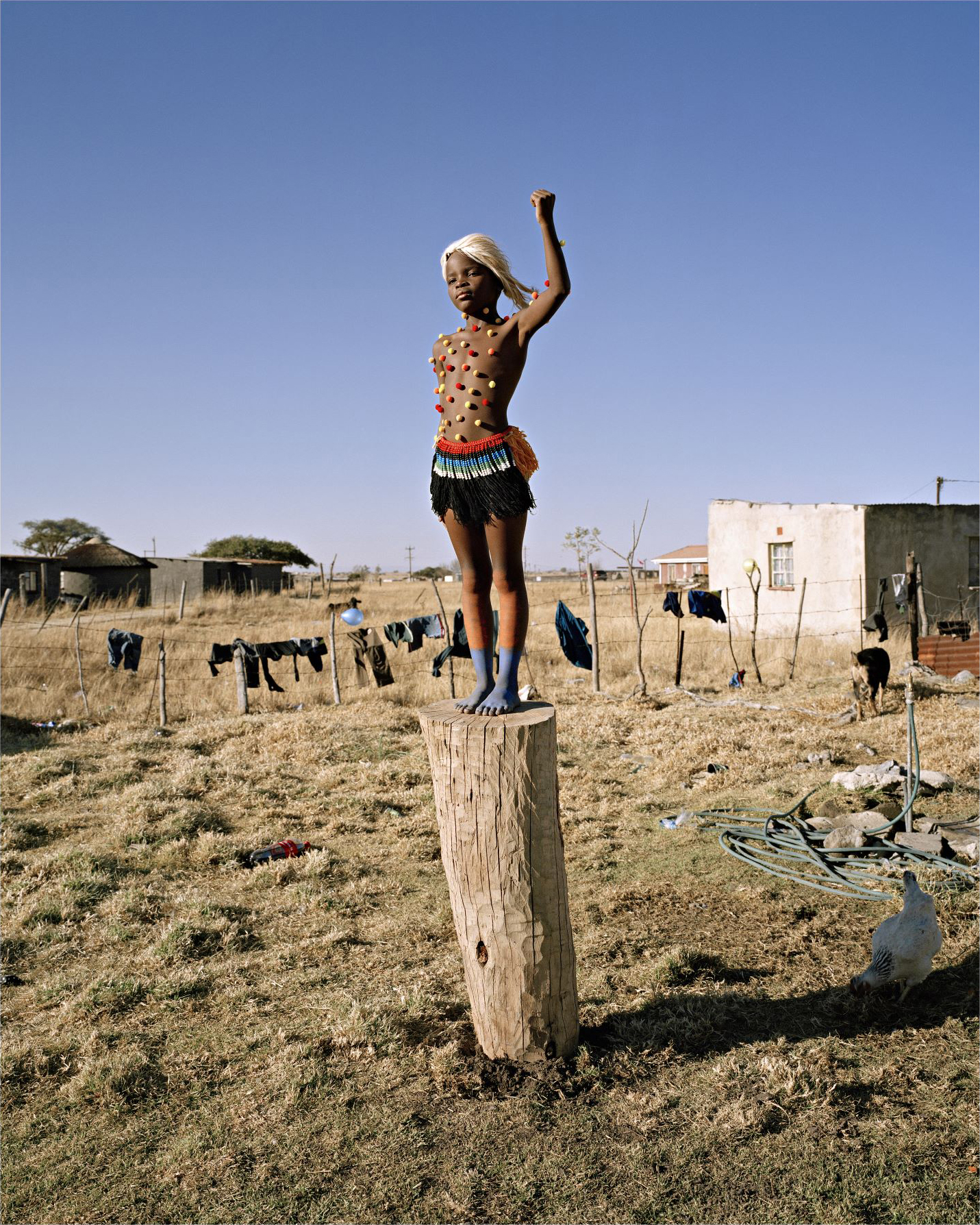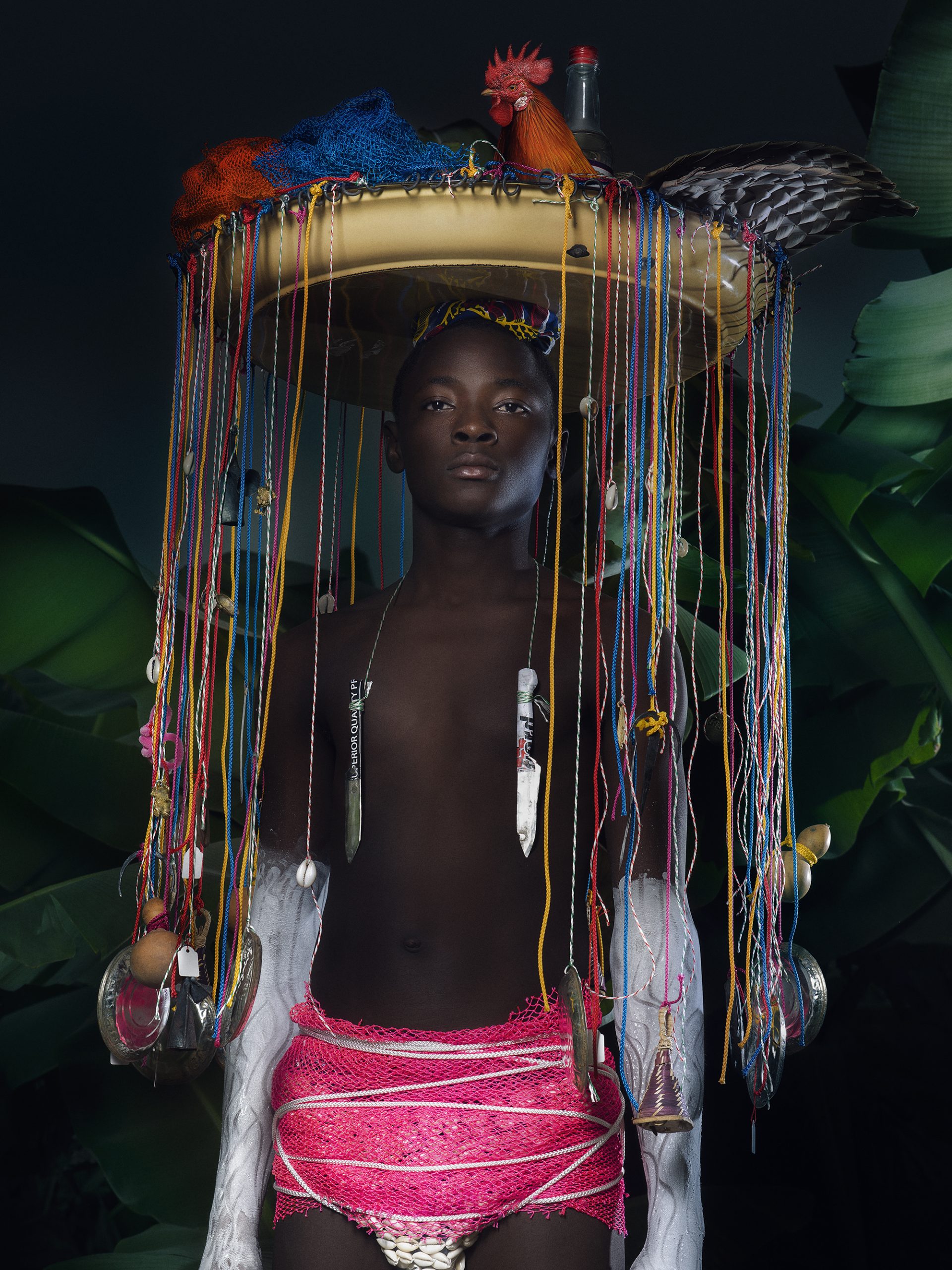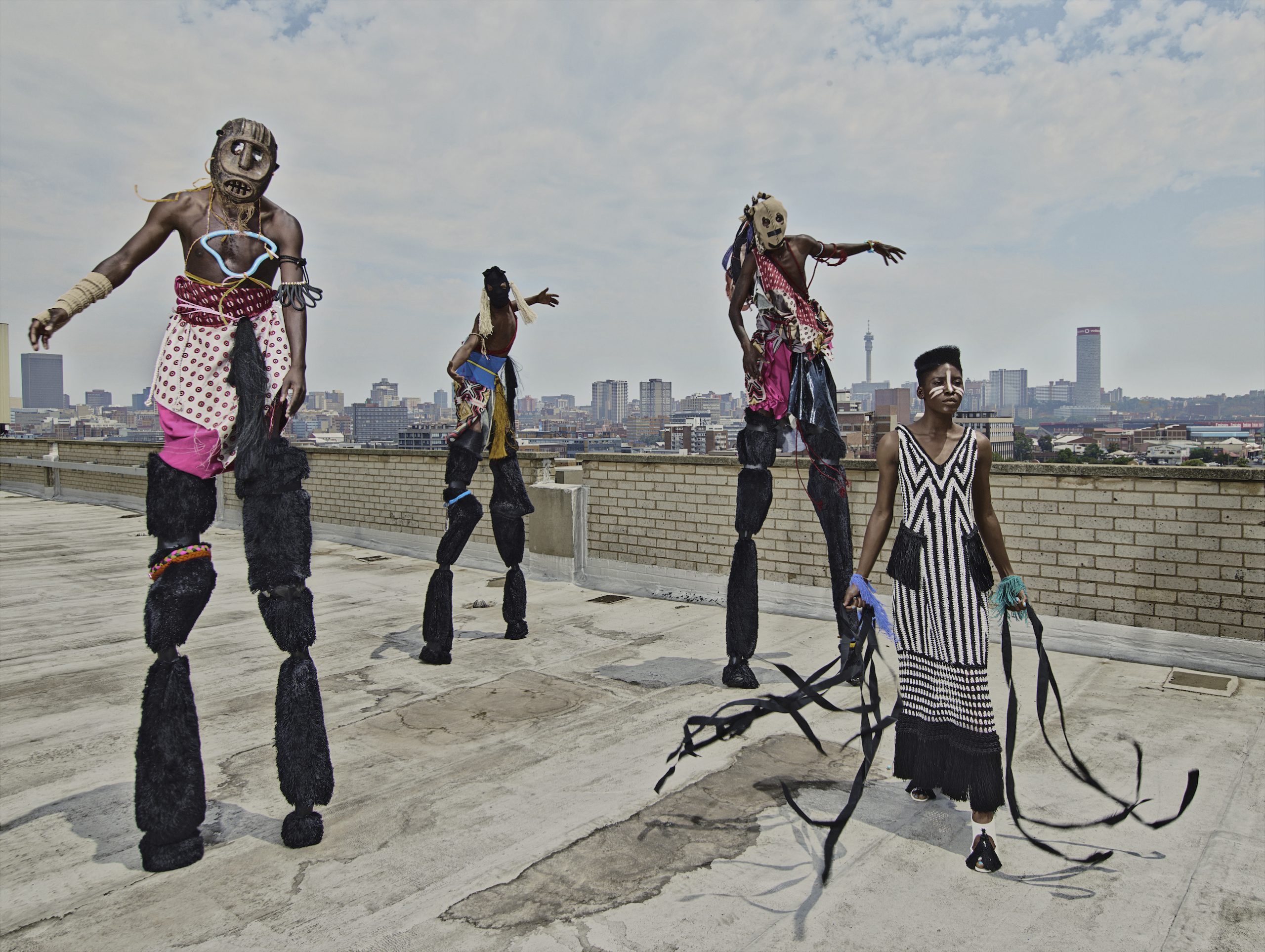


During Namsa Leuba: Crossed Looks College of Charleston English faculty member Dr. Anthony Varallo brought his courses for a tour of the exhibition. After hearing background information on Namsa Leuba and learning about the art director and photographer’s methodology and the consistent threads in her work, the students were tasked with creating ekphrastic responses to works in the exhibition. After writing poems, prose, and short stories the students shared their pieces with their classmates. A handful of the students also agreed to contribute their work to our blog. Thank you to Imogen, Canaan, Ryle, and Julia for sharing your work with us! Perhaps you would like to do the exercise for yourself?
These are Dr. Varallo’s instructions for his class:
Today we will visit the Halsey Institute of Contemporary Art, where we will receive a brief tour of the current exhibit, Namsa Leuba’s Crossed Looks. After the tour concludes, I’d like you to find a work of art that speaks to you, or grabs you in some way, and write a short exercise in response to it, by writing the opening page(s) of a short story (or complete short-short story) that focuses on one specific detail from the artwork. What is it? See if you can use one specific detail as a point of departure for an original short story. Zoom in. Get specific. Describe the detail/object. Let the detail/object lead you into a story that might have nothing to do with the original artwork—the goal here is to take one small item and let it lead you where it may.
A few observations/cautions:
– Your story can be set anywhere you want, does not have to adhere to the original artwork
– Please don’t write a story from the POV of someone in the photo/painting/artwork. Remember: the goal is to use just one small detail, not the whole artwork.
– You must bring a laptop, tablet, or notebook to write your exercise
– Please write your exercise in front of your artwork. (Don’t leave the gallery.)
Here are four responsive pieces his students shared with us.
Julia Boyland
Inspired by Namsa Leuba, Power, 2014, from the Zulu Kids series. This piece is pictured at the top.
A pair of brown corduroy pants flapped aimlessly in the afternoon breeze. They’d been drying for three days now; it seemed that someone had forgotten to take them inside. Perhaps the wearer no longer wanted the corduroy pants. Or maybe it was just that the wearer had neglected their chore of tending to the laundry. The barbed wire of the make-shift clothesline pricked the fibers of the pants. If they were ever removed, one must be careful not to let the thorns of the wire sink their metal teeth into the fabric.
Twelve days passed before the pants were saved. On the eighth day, it rained. The brown corduroy pants became a darker, deeper shade, drenched by the rain water. Soon the saturated pants were drip, drip, dripping from the cuffs onto the muddy earth below. A heavy gust of angry wind shook the lines of the fence. Whether it was out of sheer luck or strong willpower, the pants held tight to the clothesline.
When the storm passed, a sunny sky blessed the soaking trousers, slowly drying them in small patches. The warm summer air helped to speed up their recovery. Their rescuer, a limber little child, skipped over to the clothesline whistling a schoolyard tune. As he plucked them off the fence, he noticed the grasp of the barbed wire thorns. Contemplating the effect of a hypothetical consequence, he used two hands to unstick the corduroy from the brambles. Patience is a strong virtue. The pants appreciated his care.
Imogen Shearer
Inspired by Namsa Leuba, Power, 2014, from the Zulu Kids series. This piece is pictured at the top.
The bright yellow slide was marred only by dusky blue feet. Up and down the playset, the only sign of life is footprints. The grass is dead, likely suffocated by the mud brought in from town. It is dawn as the sunlight pierced through low slung buildings on the way to noon. You walk past that blue-stained playground looking for the source of the wreck. The trail of feet takes you to the schoolyard. The source of the blue mud is still missing, but it’s clear the children were involved. This seems to be a common occurrence as a hose and bucket are lying haphazardly on the concrete entrance to the school.
When you enter your classroom, the children are silent with wet feet covered by clean shoes. The children exchange glances with one another, wary of your presence.
“Why is the mud blue?” This is the first thing you think to ask. It’s been a while since you taught. The retirement money ran out when Arnold’s hip replacement surgery cleaned your accounts. None of the kids answer, so you try again, “My name is Mrs. Birtha Willard, and I will be your new teacher as Mr. Grunion has left the country due to tax fraud.”
The name of their old teacher stirs the young children. A tall, dark-haired seven-year-old raises his hand, “is Mr. Grunion not coming back?” His voice was high and keening despite his bravery in being the first to speak.
“If he does come back, he won’t be in any state to teach,” you say shortly. Their devotion to the old teacher will make your transition more difficult. At least they aren’t antagonistic towards authority figures. Putting your bag down on the newly polished desk, you assess the room. Is that gum on the ceiling? The children, about fifteen of them, dropped their shoulders and looked at each other as though lost by your response. The back bookshelf looks well-stocked, but one of the glass panels is missing.
“Where did the blue mud come from?”
The same boy, you should really ask for his name, raises his hand sharply and answers before he is called on, “It isn’t mud!”

Ryle Ferguson
Inspired by Namsa Leuba, Azaca, 2017, from the Weke series. This piece is pictured here.
The Headdress’s Odyssey
I can still remember the day I was born. Everything started out blurry, but then suddenly there was light. I could feel my hair blowing in the wind, making twinkling noises as my shells collided with one another. I was heavy, but in a good way. The kind of heavy that tells a story. The kind of heavy that brings meaning to this world. I was surrounded by people that were twisting and twirling different parts of myself. One of them was my mother. She stared at me with the most admiration I have seen to this very day. I knew that she was preparing me for something. I knew I was destined for big things.
The next thing I remember is being fluffed, surrounded with tissue, and packed into an enormous box. My mom left holes for me to breathe and to see. Although that was the last time I saw her, she parted from me with an enormous kiss that still rings on the tip of my forehead. Throughout my journey, I saw the world’s most beautiful trees. The kind of trees whose leaves sang songs. I saw the most perfect color blue one could possibly imagine. The kind of blue that made up a roaring ocean. And, most importantly, I saw faces. The kind of faces that didn’t have to do anything except be. They were happy to see me and handled me with care.
Upon my arrival, I was lifted out of the box and entered into a world that was like that of a circus. Flashing lights were everywhere. People ran back and forth, who reminded me of the animals I saw along my way. Some of them had paint brushes and some of them carried long, vibrant gowns. It felt like my big moment was right around the corner and I could feel my mother’s pride on my shoulder.
I seemed to be the queen of the crime scene, for I was lifted like a precious piece of glass onto a woman’s head. She was the most beautiful creature I had ever seen. She was my home.

Canaan Hodges
Inspired by Namsa Leuba, Untitled VII, 2015, from the Tonköma series. This piece is pictured here.
Idols of Johannesburg
Born from the Gods and cast down out of their paradise, humanity lies. A symbol of the slight benevolence and grace the Gods offers shown in the fertile land our people reside. Those very lucky few that are graced with inklings of their radiance tower over us less fortunate. An unknown variable waiting in the wings of some intrinsic part of our body becomes manifest during crucial parts in our lives. Metamorphosis as many call it occurs from human to Idol dissimilar to a butterfly and more like a frog. Newly formed muscles and limbs bulge and coarse with the life-giving fluids, the legs grow sturdier and longer coat with dense fur. These Idols literally tower over their normal counter parts, but similar to the gods they are benevolent as they walk gracefully toward the sunset.